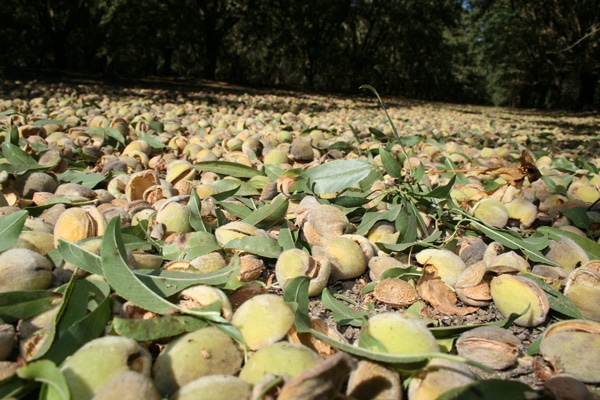
Since peaking at historic highs of more than $4 per meat-pound in late September as this year’s harvest began winding down, average kernel prices over all varieties of California almonds had slipped about 15 cents a pound by the end of October.
Paul Ewing with RPAC, LLC, an independent almond processor based in Los Banos, Calif., explains the softening. “As they got their inventories, more sellers came on the market and buyers started taking a step back,” he says.
That occurred even with the 2013 marketing year closing at the end of August with low stocks of almonds in warehouses and this year’s disappointing production levels in the orchards.
The USDA’s June 30 California Objective Measurement Report by the National Agricultural Statistics Service projected 2014 almond production at 2.1 billion meat pounds, 4.5 percent more than in 2013.
“It appears that the size of this year’s almond crop will come in well below that estimate and probably less than last year,” Ewing says.
Yields on the east side of the valley, where more water was available for irrigating their fields, were less disappointing than on the West Side, where many growers received less and/or lower quality water for their trees, he notes.
In general, the quality of the 2014 almond crop is good, Ewing says. However, there were pockets of high navel orangeworm damage. Although not a problem throughout the state, some areas the crop suffered drought-related injury including shriveled, off-color and textured nuts.
The high prices for the new crop are the result of continued strong world-wide demand for almonds, the relative high prices of alternative nuts and concern about the drought’s impact on long-term supply of California almonds, Ewing notes. “In Turkey, a major hazelnut producer, a freeze has pushed the price of hazelnuts to about 30 percent higher than almonds,” he says.
Want the latest agricultural news each day? Click here for the Western Farm Press Daily e-mail newsletter.
Due to the three-to 12-month lag in the market before changes in input prices can be passed on to consumers, some re-baggers and food manufacturers are paying more to produce almond products than what they can sell them for, he notes.
Meanwhile, the North American demand for almonds seems to be covered adequately right now and the market in India is quiet for the moment following two strong months of almond shipments to those buyers, Ewing says. However, he expects more interest from buyers in Europe for almonds to replenish supplies soon, for arrivals after the first of January, 2015, and from those in China in preparation for the Chinese New Year celebrations in February.
After the volatile rise in prices this year, the market for California almonds has become unsettled, he says. Sellers are worried about the impact of drought, including restrictions on deliveries of surface water and the continued buildup of salt in the soil, a condition which is spreading from the West Side to other almond-growing areas of the San Joaquin Valley.
“Some West Side growers, preparing for a possible minimal supply of water for next year, are considering spreading out the water they have slowly over the 2015 season, just to keep their trees healthy,” Ewing says. “In the process, they may lose most of their production.”
Meanwhile, the current high prices of almonds has food processors bracing for the possibility of a smaller supply of almonds in the coming years. Some are considering replacing almonds in their products with alternatives like peanuts, cashews or raisins. Others are looking at reducing the size of their almond packages to help limit a rise in the price of their products, Ewing reports.
For many of California’s almond growers, the high prices for their 2015 crop are bitter sweet, he adds.
“Some are disappointed by their yields this year,” Ewing says. But, overall, they’re pleased with the returns they’re getting. Still, they can’t be completely happy about it, because they don’t know how long they can continue to grow almonds without the water they need.”
About the Author(s)
You May Also Like




